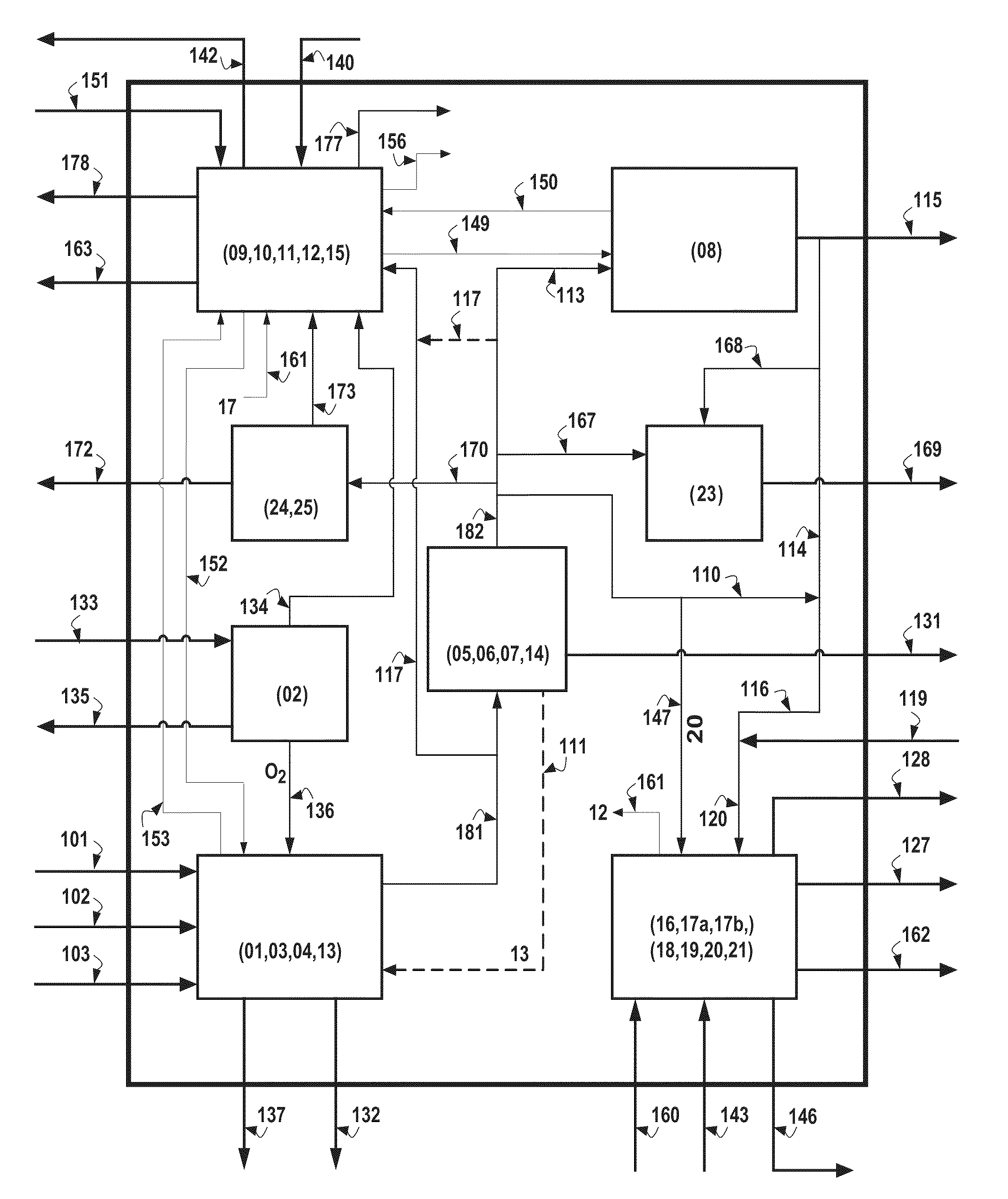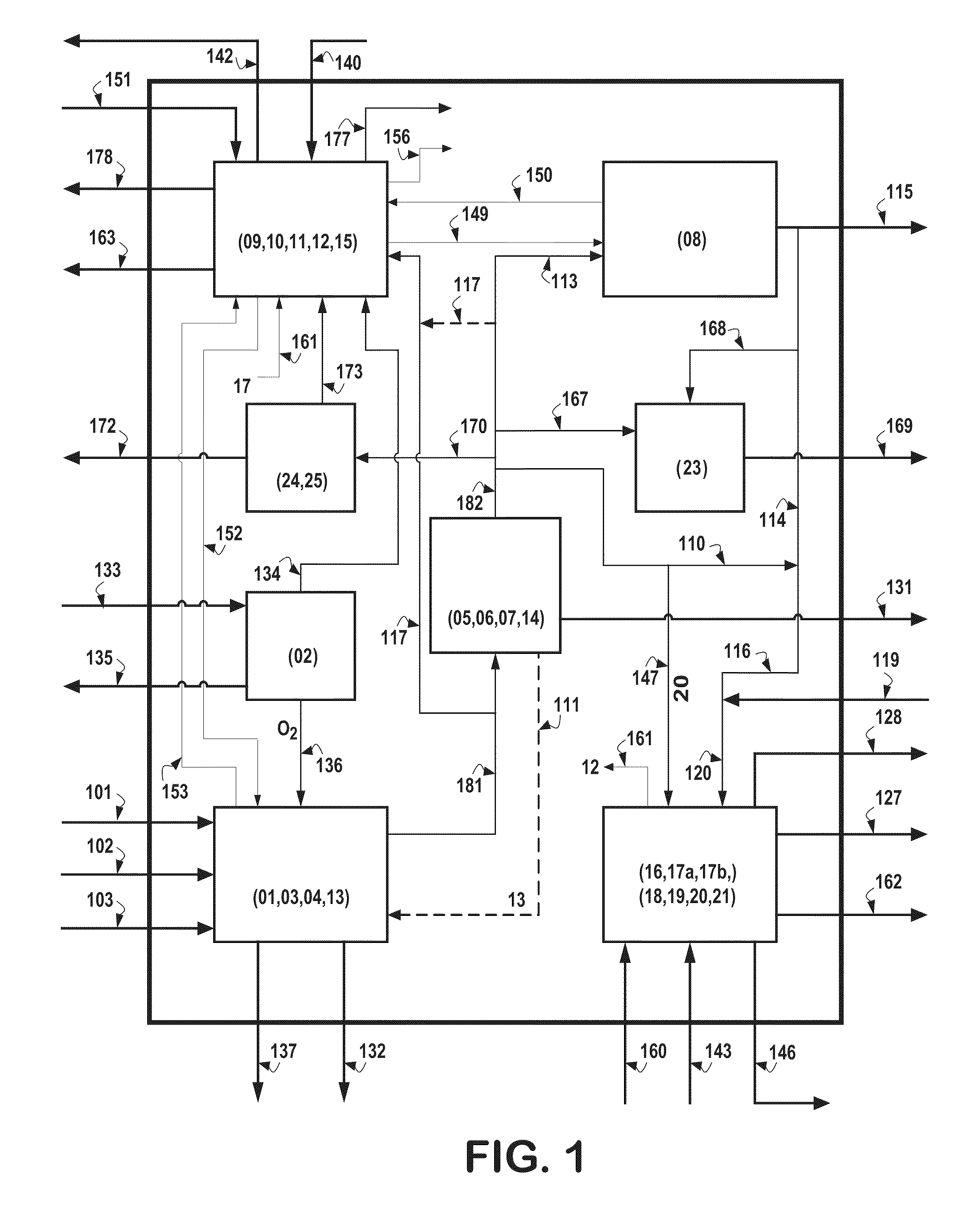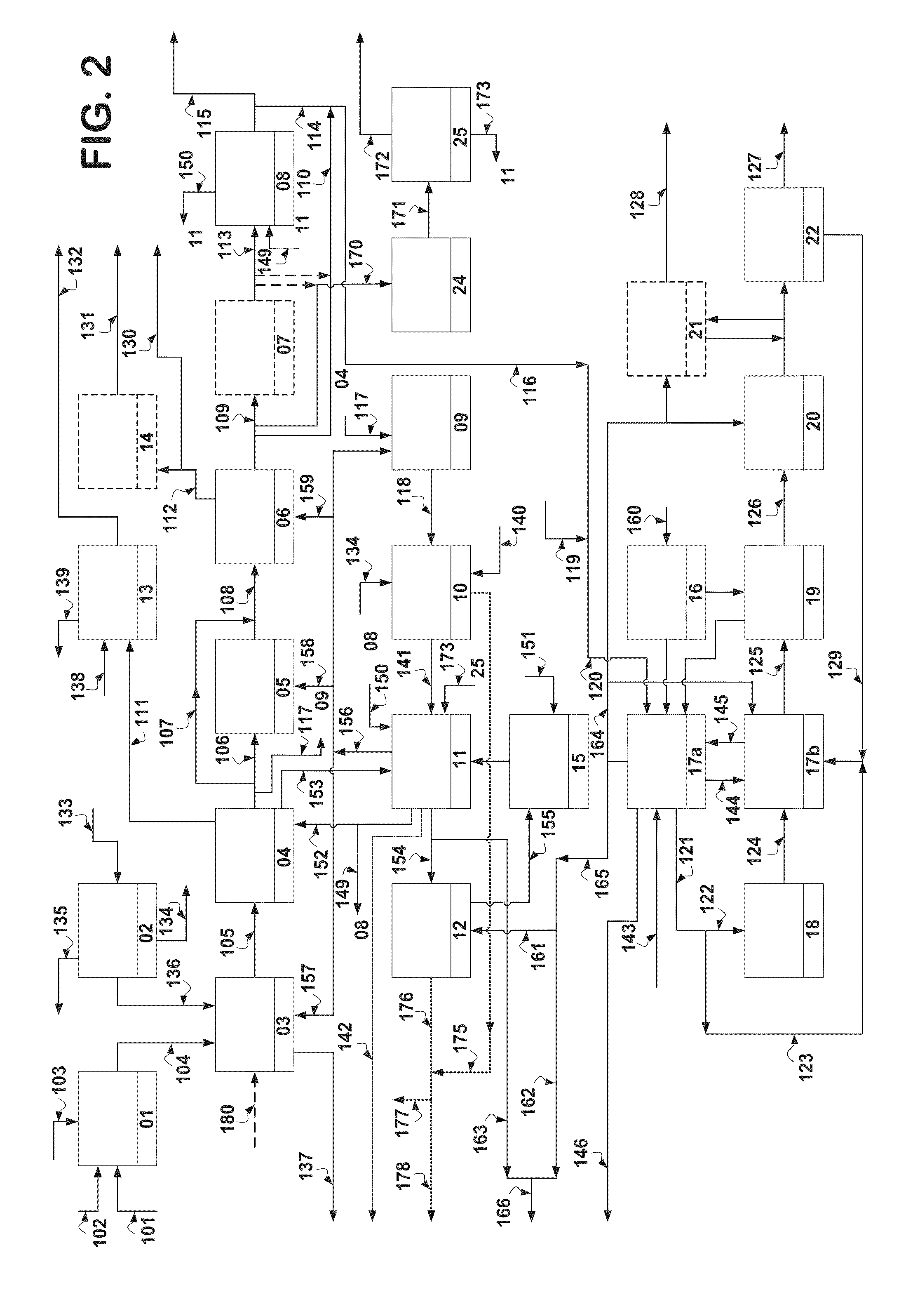Gasification and steam methane reforming integrated polygeneration method and system
a technology of gasification and steam methane, applied in the direction of gaseous fuels, combustible gas purification/modification, combustible gas production, etc., can solve the problems of high capital investment in hydrogen gasification from coal and/or petroleum coke, high cost of hydrogen, high cost of natural gas price, etc., to minimize the impact of high natural gas price on hydrogen production, high level of reliability, and high level of reliability
- Summary
- Abstract
- Description
- Claims
- Application Information
AI Technical Summary
Benefits of technology
Problems solved by technology
Method used
Image
Examples
example 1
Low Product Cost
[0084]FIG. 2 shows the block flow diagram for this scenario. Refinery hydrogen demand in this scenario is to be met by a combination of hydrogen from the SMR and hydrogen from the gasification unit.
[0085]The gasification facility will be the primary source of feed (SNG) to the SMR once the gasification facility reaches full plant availability. In addition, when SNG production exceeds that required for hydrogen production the excess SNG will be sold into the existing natural gas distribution network therefore assuring that the gasification facility can sell product even when the refinery demand may be reduced.
[0086]The feed and product interchange with the refinery are shown in Tables 3 and 4.
[0087]In this scenario up to 75% of the hydrogen and steam is considered to be supplied by the gasifier. With the correct plans in place the impact of the shutdown of one gasifier on steam supply will be less than a 35% reduction and has a strong possibility of being 30% or less....
example 2
Maximum Reliability
[0088]FIG. 4 shows the block flow diagram for this scenario.
[0089]As in Scenario 1, the gasification facility will be the primary source of feed (SNG) to the SMR's once the gasification facility reaches full plant availability. In addition, when SNG production exceeds that required for hydrogen production the excess SNG could be sold into the existing natural gas distribution network therefore assuring that the gasification facility can sell product even when refinery demand is reduced.
[0090]In this scenario, all the hydrogen to the refinery and some or all of the steam demand of the refinery may come from the SMR. Under this scenario, hydrogen availability to the refinery will not be impacted by gasifier operation. In this scenario, if one of the gasifiers shuts down requiring the spare to be restarted less than 20% of the steam flow will be interrupted.
[0091]The feed and product interchange with the refinery are shown in Tables 3 and 5.
Product Availability:
[0092...
PUM
| Property | Measurement | Unit |
|---|---|---|
| temperature | aaaaa | aaaaa |
| temperature | aaaaa | aaaaa |
| pressure | aaaaa | aaaaa |
Abstract
Description
Claims
Application Information
 Login to View More
Login to View More - R&D
- Intellectual Property
- Life Sciences
- Materials
- Tech Scout
- Unparalleled Data Quality
- Higher Quality Content
- 60% Fewer Hallucinations
Browse by: Latest US Patents, China's latest patents, Technical Efficacy Thesaurus, Application Domain, Technology Topic, Popular Technical Reports.
© 2025 PatSnap. All rights reserved.Legal|Privacy policy|Modern Slavery Act Transparency Statement|Sitemap|About US| Contact US: help@patsnap.com



